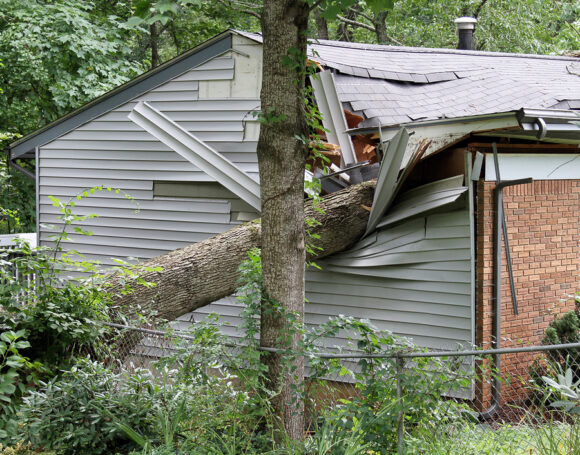North Dakota tree owners take note: If your tree’s branches damage your neighbor’s house, he or she may be able to get into your pocket.
So says the North Dakota Supreme Court, which ruled that the owner of three rogue trees next to a chiropractic clinic in southeastern North Dakota may have to pay for damage allegedly caused by the trees’ spreading branches.
The Tuesday decision split the court’s five justices, with three ruling the clinic’s owner was eligible for compensation and two asserting that the Legislature, not the courts, should assign blame for the harm caused by such trees.
“I believe the majority unnecessarily adopts public policy on liability for errant trees,” Justice Daniel Crothers wrote in his dissent.
The case began when chiropractor Richard Herring asked the owner and manager of a neighboring Lisbon apartment building to pay for roof and wall damage Herring said was caused to his clinic by tree branches, leaves and other debris. The three trees are more than 30 feet tall, court documents say.
The trees’ limbs brushed the clinic’s roof and their leaves clogged his gutter downspouts, which led to water damage to the roof, building walls and wooden fascia, court filings say. Herring replaced the roof and did other repairs two years ago, at a cost of more than $19,000.
Since he bought the building in 1982, Herring has regularly cleaned out its downspouts and trimmed branches overhanging his property to limit the tree problem, court records say. However, the trees grew too large for Herring to trim them without going onto the apartment building’s land.
The building’s owner, Lisbon Partners Credit Fund Ltd., and its manager, Five Star Services, declined to pay for the repairs, so Herring sued.
Southeast District Judge Thomas Merrick dismissed the case, ruling that it was Herring’s job to trim the trees’ branches once they extended over his property.
The Supreme Court’s decision Tuesday reversed Merrick, with three of the five justices ruling that Lisbon Partners and Five Star were required to ensure their trees didn’t damage Herring’s building.
The opinion, written by Chief Justice Gerald VandeWalle, said the North Dakota Supreme Court had never ruled on the question of whether a landowner was responsible for trimming trees on his land to avoid damaging a neighbor’s property.
It says trees do not damage neighboring land just by extending over it, or by dropping “leaves, flowers or fruit.” However, a tree owner can be held responsible for damage if a tree’s branches or roots damage a neighbor or present a close threat of damage, the opinion says.
The decision does not automatically award money to Herring. He still must show the damage to his clinic was caused by branches scraping his building, rather than by falling leaves, VandeWalle wrote.
Crothers, in his dissent, said Herring had not shown earlier that branch scraping was to blame for the damage to his building.
“The record is devoid of evidence regarding compensable damage from contact by the tree,” Crothers wrote.
Was this article valuable?
Here are more articles you may enjoy.


 Losses Top $20 Billion in Asia Floods as Climate Risks Grow
Losses Top $20 Billion in Asia Floods as Climate Risks Grow  How Three New CMS Policies Impact Workers’ Comp Claims
How Three New CMS Policies Impact Workers’ Comp Claims  Verlan Files Subro Suit Against Georgia Chemical Plant After $20M Payout on Fire
Verlan Files Subro Suit Against Georgia Chemical Plant After $20M Payout on Fire  Truckers Who Fail English Tests Get Pulled Off Roads in Trump Crackdown
Truckers Who Fail English Tests Get Pulled Off Roads in Trump Crackdown 